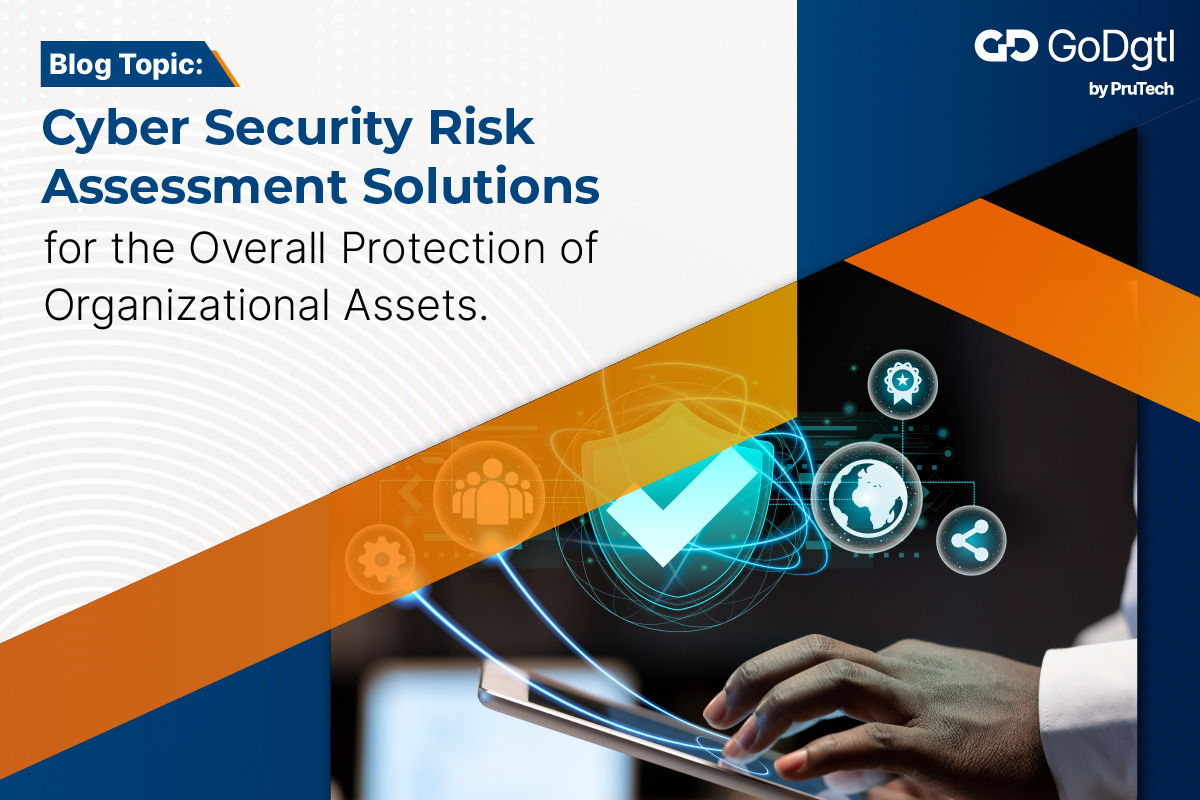In today’s digital age, organizations are becoming increasingly reliant on information technology and information systems to conduct their business operations. While this technology has brought many benefits, it has also created a new set of challenges in the form of cyber threats and vulnerabilities.
With the increasing sophistication of cyber criminals, organizations face an ever-growing risk of cyber attacks that can cause significant harm to their critical assets, including financial loss, reputational damage, and legal liabilities.
In order to manage these risks effectively, organizations need to adopt a comprehensive cyber security risk assessment approach that helps them identify, analyze, and prioritize the risks associated with their IT infrastructure and digital assets. By doing so, organizations can take timely and proactive action to protect their assets and ensure the continuity of their business operations. In this blog post, we will explore the importance of cyber security risk assessment for organizations and discuss the various solutions that can help them achieve overall protection of their organizational assets.
Types of Cyber Risks:
- Data Breaches: Unauthorized access to sensitive data can lead to financial loss, reputational damage, and legal penalties.
- Ransomware: Malware that encrypts data and demands a ransom to restore access to it can cause disruption to operations and financial loss.
- Phishing: Fraudulent emails or messages that trick users into providing sensitive information can lead to data breaches or malware infections.
- Malware: Malicious software designed to damage, disrupt, or gain unauthorized access to systems and data.
- Cyberattacks: Intentional exploitation of vulnerabilities in systems and networks to cause damage or gain unauthorized access to data.
Impact on organizations:
- Financial loss: Due to system downtime, loss of revenue, or legal penalties.
- Reputational damage: Due to loss of trust and credibility with customers, partners, and stakeholders.
- Operational disruption: Due to system downtime, loss of data, or compromised systems.
- Legal penalties: Due to non-compliance with data protection regulations or breach of contractual obligations.
- Intellectual property theft: Loss of proprietary information or trade secrets can give competitors an unfair advantage.
Importance of cyber risk assessment:
- Helps identify and prioritize potential risks to organizational assets.
- Provides a roadmap for implementing security measures and reducing the impact of potential risks.
- Helps ensure compliance with data protection regulations and contractual obligations.
- Enables proactive management of cyber risks rather than reacting to incidents after they occur.
- Helps build trust with customers, partners, and stakeholders by demonstrating a commitment to security and protecting sensitive data.
Cyber security risk assessment is a crucial component of an organization’s risk management strategy as it allows them to identify and address potential risks related to cyber threats. This is especially important in today’s digital age, where organizations are increasingly dependent on information technology and information systems.
To carry out a cyber security risk assessment, a five-step process is typically followed:
- Scope: The first step involves determining the scope of the assessment, which could include a particular business unit, location, or aspect of the business such as a website or application. Inputs from all stakeholders should be considered to identify the most critical assets and processes and define the organization’s risk tolerance level.
- Risk identification: The second step involves identifying assets that are vulnerable to cyber risks such as data breaches, ransomware, phishing, malware, and cyberattacks. It is necessary to create an inventory of all physical and logical assets and identify potential threats that may cause harm to the organization’s infrastructure.
- Risk analysis: The next step is to analyze the amount of harm a potential threat would cause to the assets. This involves assessing the likelihood of a data breach and the internal and external vulnerabilities.
- Risk evaluation: Once the risks have been identified and analyzed, they need to be evaluated to determine their level of risk. This involves considering the level of risk, transferring the risk to third parties, or mitigating the risk by implementing reliable security measures to reduce the impact.
- Documentation: Finally, all risk scenarios should be registered and updated regularly to ensure proper management of the risks.
By following this five-step process, organizations can identify, prioritize, and address potential cyber risks, which helps reduce security incidents and avoid compliance issues.
Prioritizing Risks:
After identifying and analyzing cyber risks, organizations need to prioritize them to determine which risks are the most critical and require immediate attention. There are three ways to prioritize risks:
- Level of Risk: Organizations need to evaluate the severity of the risk and determine whether the potential impact outweighs the benefits of continuing an activity. If the risk factor is higher than the potential benefits, it is best to discontinue the activity altogether.
- Transfer: In some cases, organizations may decide to transfer the risk to a third party through insurance or outsourcing. This means that the third party will be responsible for managing the risk and its potential impact.
- Mitigate: Organizations can implement security measures to reduce the impact of the risk. These measures can include implementing security protocols, increasing employee training, or investing in cybersecurity software.
By prioritizing risks based on the level of risk, whether the risk can be transferred to third parties, or whether the risk can be mitigated, organizations can better manage their cybersecurity risks and protect their assets.
Registering Risk Scenarios:
Documenting all identified risk scenarios and regularly reviewing and updating them is crucial in ensuring proper management of risks. By doing so, organizations can:
- Maintain an up-to-date inventory of assets and processes that are vulnerable to cyber threats.
- Monitor changes in the threat landscape and update risk assessments accordingly.
- Evaluate the effectiveness of risk mitigation strategies and make necessary adjustments.
- Ensure compliance with regulatory requirements and industry standards.
- Provide a record of risk management activities to stakeholders, such as regulators, auditors, and customers.
- Enable informed decision-making by senior management and other stakeholders based on accurate and current risk information.
Overall, documenting and regularly reviewing risk scenarios helps organizations stay proactive in managing risks and better protect their assets from cyber threats.
Cyber security risk assessment solutions can help improve an organization’s security of critical assets in several ways.
- First, they provide a comprehensive view of an organization’s entire digital attack surface, enabling them to identify and prioritize the most critical assets and processes that need protection. This helps organizations understand the potential impact of a cyber-attack and take appropriate measures to prevent or mitigate it.
- Second, cyber security risk assessment solutions help organizations identify and assess various types of risks, including those related to information assets, data breaches, and internal and external vulnerabilities. By analyzing these risks, organizations can develop a risk management strategy that aligns with their business objectives and risk tolerance levels.
- Third, cyber security risk assessment solutions help organizations prioritize risks based on their level of risk, whether they can be transferred to third parties, or whether they can be mitigated by implementing reliable security measures. This helps organizations allocate resources effectively and efficiently to protect their most critical assets.
- Fourth, cyber security risk assessment solutions enable organizations to document all risk scenarios and regularly review and update them to ensure proper management of risks. This helps organizations stay up-to-date with the latest cyber threats and vulnerabilities and adapt their risk management strategies accordingly.
Overall, cyber security risk assessment solutions play a crucial role in improving an organization’s security of critical assets by providing a comprehensive and systematic approach to identifying, assessing, prioritizing, and mitigating cyber risks.
Conclusion:
In today’s world, organizations face a variety of cyber risks that can significantly impact their operations and reputation. Cyber security risk assessment is a crucial part of an organization’s risk management strategy that helps identify and prioritize potential risks, evaluate their potential impact, and implement measures to mitigate them.
By following a five-step process that includes scope, risk identification, risk analysis, risk evaluation, and documentation, organizations can create a comprehensive risk management plan that addresses their unique needs and risks.
Regularly updating and reviewing the assessment process is essential to keep up with the evolving cyber threat landscape and ensure that critical assets remain secure. Ultimately, by investing in cyber security risk assessment solutions, organizations can improve their overall security posture, protect their critical assets, and minimize the risk of a potential cyberattack.
If you’re looking for professional cybersecurity risk assessment solutions, Godgtl Services can help. Their experienced team can assist in identifying and mitigating potential risks to your organization’s critical assets, ensuring you have the best protection possible against cyber threats.
To learn more, contact us Contact 24/7 – GoDgtl (go-dgtl.in).

